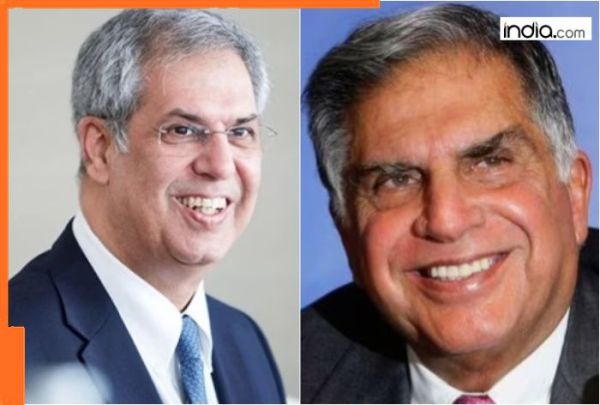Around 10 equity mutual funds have consistently delivered over 30% CAGR in the last three and five years. ETMutualFunds analyzed the performance of 199 equity mutual funds that have been in the market for at least five years.
The listed 10 funds were from mid and smallcap categories. Out of which, five were midcaps, whereas five were smallcap funds.
Also Read | Best corporate bond mutual funds to invest in June 2025
Bandhan Small Cap Fund offered 35.48% and 35.95% CAGR in the last three and five years, respectively. Edelweiss Mid Cap Fund offered 31.71% and 33.21% CAGR in the last three and five years, respectively.
Franklin India Smaller Cos Fund also featured in the said list, offering and gave 30.07% and 34.09% CAGR over the past three and five years, respectively. The next two funds in the list were midcap funds. HDFC Mid-Cap Opportunities Fund and Invesco India Midcap Fund delivered over 30% CAGR in the said time periods
Invesco India Smallcap Fund offered a CAGR of 31.92% and 33.57% in the last three and five years, respectively. Motilal Oswal Midcap Fund gave a CAGR of 35.26% and 36.21% in the last three and five years, respectively.
The next two funds in the list were from Nippon India Mutual Fund. Nippon India Growth Fund, a midcap fund, offered 31.05% CAGR in the last three years and 32.78% CAGR in the last five years.
Nippon India Small Cap Fund, the largest smallcap fund, gave a CAGR of 30.49% and 37.45% respectively in the last three and five years.
Quant Small Cap Fund, the largest fund managed by Quant Mutual Fund, gave 31.35% and 43.86% CAGR in the last three and five years, respectively.
Among these 10 funds, Bandhan Small Cap Fund gave the highest CAGR of 35.48% in the last three years, whereas Quant Small Cap Fund offered the highest CAGR of 43.86% in the last five years.
Also Read | International mutual funds offer 14% average return in 1 year. Are global markets the new hotspot?
Two funds - Bandhan Small Cap Fund and Motilal Oswal Midcap Fund - gave over 35% CAGR in both horizons.
Several funds delivered over 30% CAGR in either the three-year or five-year period were excluded from the list as only those achieving over 30% CAGR in both timeframes were considered.
We considered all equity mutual funds, excluding sector and thematic funds. We considered regular and growth options only. We calculated the CAGR in the last three years and five years.
Note, the above exercise is not a recommendation. The exercise was done to find which equity mutual funds gave over 30% CAGR in the last three and five years. One should make their investment or redemption decisions based on the above exercise.
One should always make investment decisions based on their risk appetite, investment horizon, and goals.
(Disclaimer: Recommendations, suggestions, views and opinions given by the experts are their own. These do not represent the views of The Economic Times)
If you have any mutual fund queries, message on ET Mutual Funds on Facebook/Twitter. We will get it answered by our panel of experts. Do share your questions on ETMFqueries@timesinternet.in alongwith your age, risk profile, and twitter handle.
The listed 10 funds were from mid and smallcap categories. Out of which, five were midcaps, whereas five were smallcap funds.
Also Read | Best corporate bond mutual funds to invest in June 2025
Best MF to invest
Looking for the best mutual funds to invest? Here are our recommendations.
Bandhan Small Cap Fund offered 35.48% and 35.95% CAGR in the last three and five years, respectively. Edelweiss Mid Cap Fund offered 31.71% and 33.21% CAGR in the last three and five years, respectively.
Franklin India Smaller Cos Fund also featured in the said list, offering and gave 30.07% and 34.09% CAGR over the past three and five years, respectively. The next two funds in the list were midcap funds. HDFC Mid-Cap Opportunities Fund and Invesco India Midcap Fund delivered over 30% CAGR in the said time periods
Invesco India Smallcap Fund offered a CAGR of 31.92% and 33.57% in the last three and five years, respectively. Motilal Oswal Midcap Fund gave a CAGR of 35.26% and 36.21% in the last three and five years, respectively.
The next two funds in the list were from Nippon India Mutual Fund. Nippon India Growth Fund, a midcap fund, offered 31.05% CAGR in the last three years and 32.78% CAGR in the last five years.
Nippon India Small Cap Fund, the largest smallcap fund, gave a CAGR of 30.49% and 37.45% respectively in the last three and five years.
Quant Small Cap Fund, the largest fund managed by Quant Mutual Fund, gave 31.35% and 43.86% CAGR in the last three and five years, respectively.
Among these 10 funds, Bandhan Small Cap Fund gave the highest CAGR of 35.48% in the last three years, whereas Quant Small Cap Fund offered the highest CAGR of 43.86% in the last five years.
Also Read | International mutual funds offer 14% average return in 1 year. Are global markets the new hotspot?
Two funds - Bandhan Small Cap Fund and Motilal Oswal Midcap Fund - gave over 35% CAGR in both horizons.
Several funds delivered over 30% CAGR in either the three-year or five-year period were excluded from the list as only those achieving over 30% CAGR in both timeframes were considered.
We considered all equity mutual funds, excluding sector and thematic funds. We considered regular and growth options only. We calculated the CAGR in the last three years and five years.
Note, the above exercise is not a recommendation. The exercise was done to find which equity mutual funds gave over 30% CAGR in the last three and five years. One should make their investment or redemption decisions based on the above exercise.
One should always make investment decisions based on their risk appetite, investment horizon, and goals.
(Disclaimer: Recommendations, suggestions, views and opinions given by the experts are their own. These do not represent the views of The Economic Times)
If you have any mutual fund queries, message on ET Mutual Funds on Facebook/Twitter. We will get it answered by our panel of experts. Do share your questions on ETMFqueries@timesinternet.in alongwith your age, risk profile, and twitter handle.








